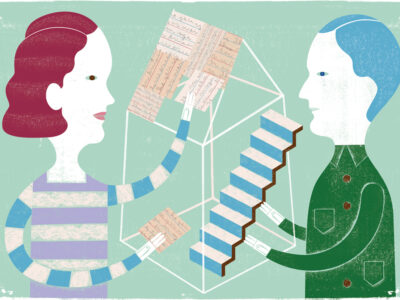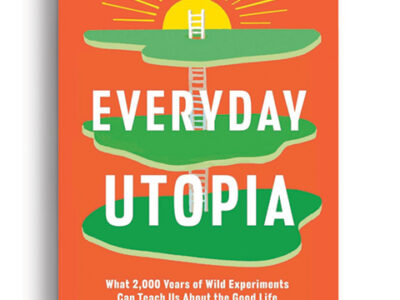The period surrounding the French Revolution is remembered mainly for political upheaval, but it also gave rise to an unusual melding of ideas about science and music. In a public lecture hosted by the Penn Humanities Forum in January, John Tresch, assistant professor of the history and sociology of science, and Emily Dolan, assistant professor of music, explored the ways this interplay reflected changing sensibilities at the dawn of the industrial era. In their telling, musical instruments were undergoing profound changes that would culminate not only in the development of the modern orchestra, but in new ideas about experimental science and a striking conception of human individuality. Here is an abridged passage from their talk.
Tresch: For the philosophes, observation was closely tied to sentiment, sympathy, and sensibility. Knowing was not just reasoning, but involved all the senses, the body, and the emotions. This emphasis on the activity of the eye, the ear, and the hand connects directly to [Diderot’s] Encyclopédie’s fascination with tools and instruments. We see dawning on its pages a new conception of knowledge. Knowledge is seen as active mediation, through engagement with the material world.
Dolan: This conception is underlined by metaphors of human receptivity as akin to musical instruments. Philosophers, poets, and even physicians explained human physiology by referring to instruments. Our nerves were string instruments that transmitted vibrations. For example, Johann Gottfried Herder wrote that “music plays on the clavichord of our soul, which is our innermost being.” … Like the Romantic artist, the Romantic scientist was a sensitive and delicately tuned instrument. He was a special kind of person, able to merge his inner self with outer nature. He himself was a transforming instrument.
Tresch: So this is the sort of thing the German Romantics were all interested in: this direct merging of self and nature through metamorphosis. And this was true in both the arts and in science. Experiments which used the self as an instrument were essential to the Romantic view of knowledge. That is, what we perceive is always strongly modulated by, or formed by, the activity of our senses, by our faculties, by our mind.
Dolan: In fact, the way that people thought about ordinary tools started to reflect a new metamorphic conception of instruments. The shepherd’s pipe, the hunting horn, the pastoral flute were given, in this period, extraordinary powers. In 1797 Goethe wrote the well-known poem “The Sorcerer’s Apprentice,” in which broomsticks come to life. For the Romantic, art becomes a universal way of understanding human activity. It’s endowed with a higher calling: to bring humans into harmony with the natural world, a kind of second nature. The artist no longer reflects the world, but now actively creates it, using imagination and genius, but also technology.
—Sean Whiteman LPS’11




